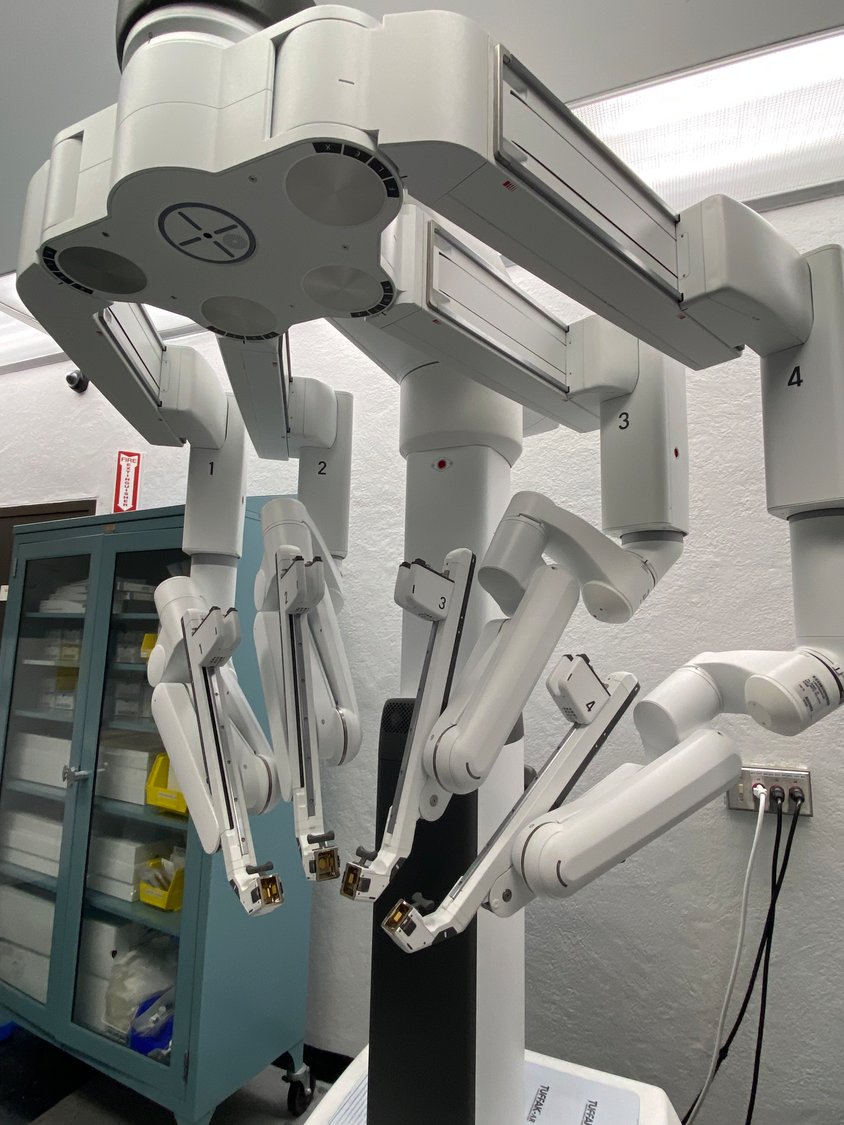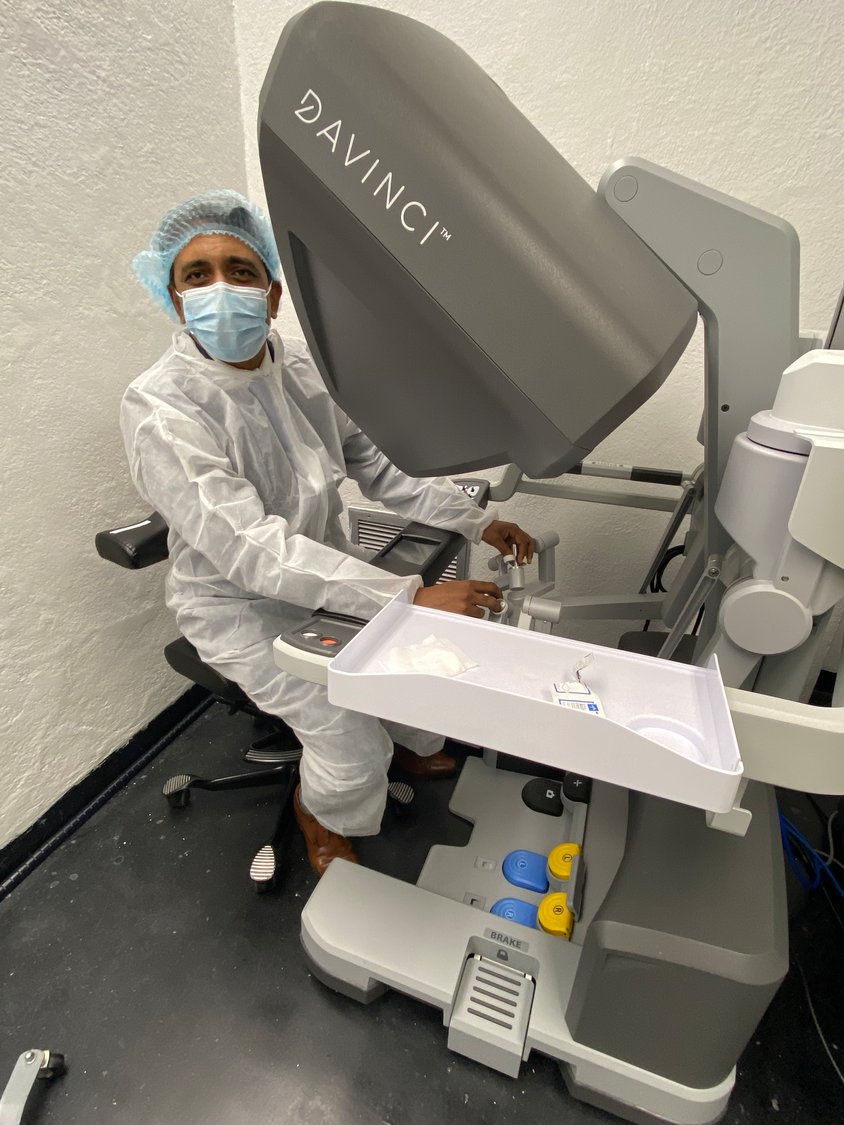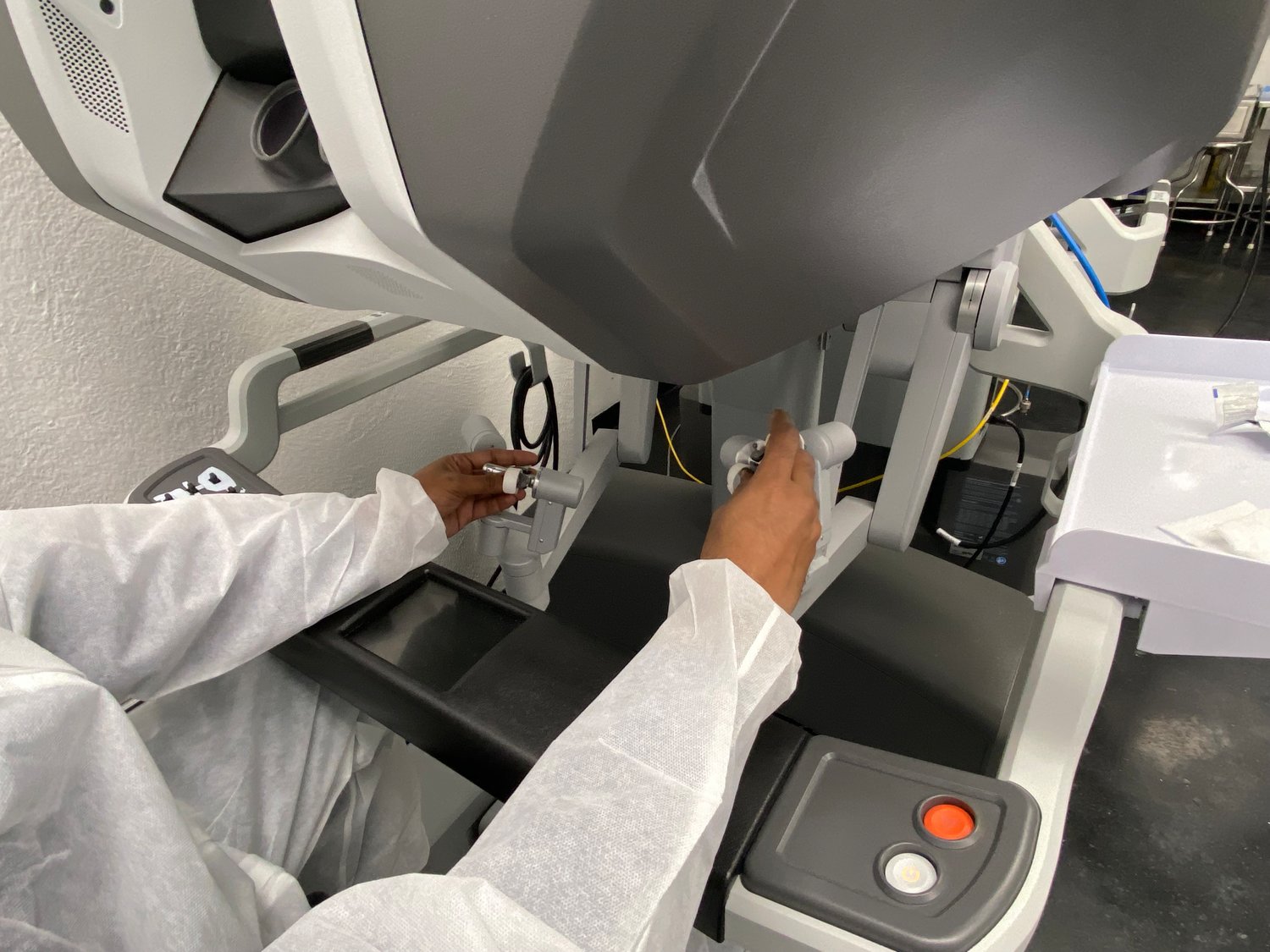Friday, July 26, 2024
NUMC excels at robotic surgeries, with help from the da Vinci robot
Imagine a doctor telling you that you need your gallbladder removed. Then imagine the doctor telling you that the procedure would be done using a robot. At first, you would have a lot of questions, but then you would find out that it’s actually one of the safest, least invasive ways to do surgery.
Nassau University Medical Center got its first robot in 2020, and after two years of extensive training and teamwork, the hospital has met the Surgical Review Corporation’s accreditation requirements to become a Center of Excellence in robotic surgery. The requirements included performing over 200 surgeries, training and certifying surgeons and registered nurses, and passing an on-site inspection of both the facility and staff.
SRC’s Center of Excellence accreditation program ensures the safest, highest quality of care is delivered to patients receiving robot-assisted surgeries worldwide, regardless of where they choose to have their procedure performed. NUMC staffs seven surgeons credentialed to operate the da Vinci Xi robot and a team of trained operating room nursing staff to assist. The hospital also implemented a train-the-trainer method to continue to grow the program.
Even though NUMC was one of the last hospitals to get a robot, due to its price, it was one of the fastest hospitals to get SRC’s approval.
“When Covid happened, I said, ‘you know what, to make it safer for surgeons, let me see if I can get a robot,’” Dr. Anthony Boutin, president, CEO and chief medical officer of NUMC, said. “We were doing dental and ophthalmology, making sure they were safe, and I knew the robot would be non-invasive, and it ultimately became a safety thing.”
Since its first case in October 2020, NUMC’s robotics staff has successfully performed 361 robot-assisted surgeries with no complications.
The da Vinci robot comes with a price of upward of a million dollars. But, the benefits could easily outweigh the cost. Robot-assisted surgeries cause less pain and blood loss, minimal scarring, a reduced risk of infection, and shorter hospital stays. Patients are almost always discharged within four hours after the operation.
There were three main factors that helped the hospital get the robot, according to Dr. Venkatesh Sasthakonar, the head of the robotics program and director of bariatric surgery. The motivation that the underserved and the underprivileged patients have access to the latest in technology regardless of their financial status, priority of resident education, and how often the hospital would put the robot to use.
The hospital provides minimally invasive robot-assisted surgery for bariatrics (weight loss), OBGYN, and general surgery. Common minimally invasive procedures performed include gallbladder removal, hernia repair, bariatrics, hysterectomy, pelvic mass removal, appendectomy, surgical oncology and bowel resection.
“The most common misconception that people have about robotic surgery is that I’m going to type into the computer and tell it to take out the gallbladder and then go have a cup of coffee while the robot takes the gallbladder out,” Dr. Sasthakonar said. “But that is far from what happens.”
Dr. Sasthakonar explained that the robot has four arms, one has a camera while the others hold instruments. It’s all connected to a console where the surgeon sits in the operating room. So when the surgeon looks into the console, they see the body part that is being operated on in a 3-D visualization. Anything the surgeon’s hand does, the robot does.
“It’s an extension of the surgeon, but it has better visualization,” Dr. Sasthakonar said. “It is more precise than a human hand.”
Dr. John Riggs, chairman of OBGYN, and Dr. Lambros Angus, chairman of surgery, set internal credentialing requirements for physicians to use the robot, including completion of online learning modules, wet lab training, and proctoring. OR nurses received a combination of intensive training from Intuitive, the manufacturer of da Vinci, and the Association of periOperative Registered Nurses, which included online and hands-on training, and a competency review from Intuitive prior to certification. NUMC also completed a seven-day quality training from Intuitive to prepare sterilization technicians to sterilize and reassemble the machine.
“There’s the ability for the teaching module, the resident gets to assist on a different module,” Dr. Riggs said. “They’re sitting there and seeing everything.”
Jackie Espejo, the deputy chief nursing officer at the hospital, said that she remembers very clearly the day that the robot arrived.
“The nurses learned how to put the instruments on the robotic arm, they learned how to drape the robot, and they learned to understand all the components of how the robot works when the surgeons are doing their surgery,” Espejo said. “They worked in pairs, and only when you have been able to complete 10 robotic cases as a nurse, then you can become a trainer for the other team.”
Teaching everyone how to use the robot was a great way to come together and have a team environment. “We got them all a red jacket,” Dr. Sasthakonar said. “The robotic nurses wore red jackets and it meant something to them.”
Robotic surgeries are the way of the future, according to the doctors.
“There’s more robotic surgery being done than even laparoscopic now the way that trends are going,” Dr. Riggs said. “Open cases are becoming obsolete, but you still have to know how to open somebody in case they can’t be visualized or completed robotically.”
HELP SUPPORT LOCAL JOURNALISM
The worldwide pandemic has threatened many of the businesses you rely on every day, but don’t let it take away your source for local news. Now more than ever, we need your help to ensure nothing but the best in hyperlocal community journalism comes straight to you. Consider supporting the Herald with a small donation. It can be a one-time, or a monthly contribution, to help ensure we’re here through this crisis. To donate or for more information, click here.
Sponsored content
Other items that may interest you











